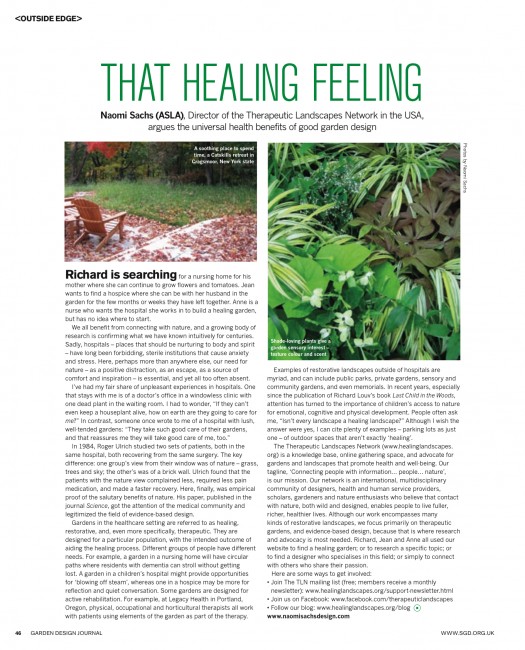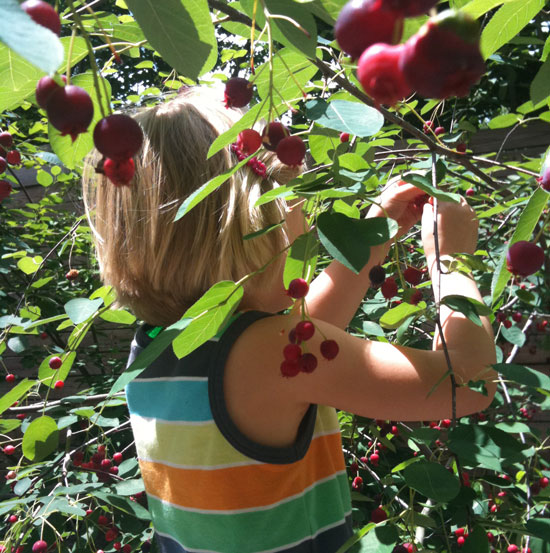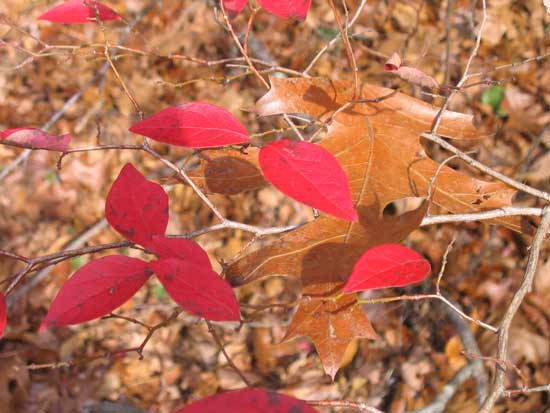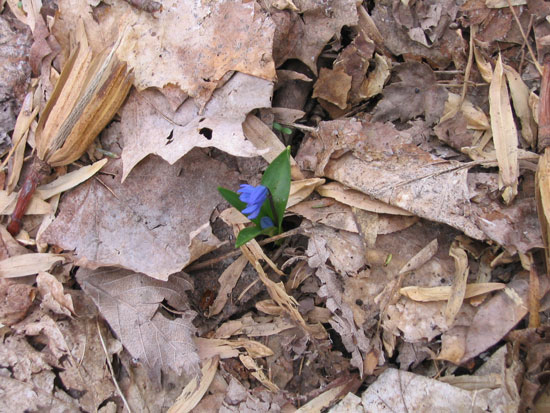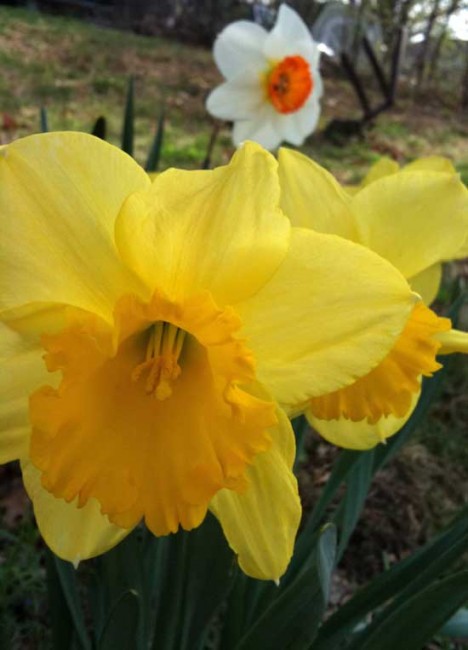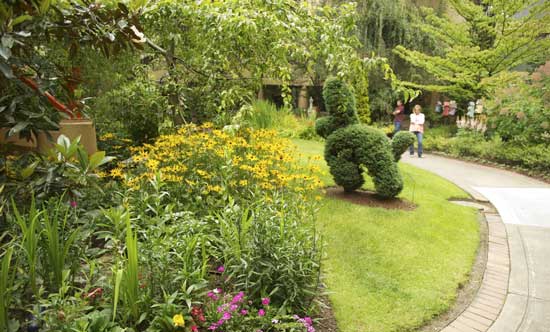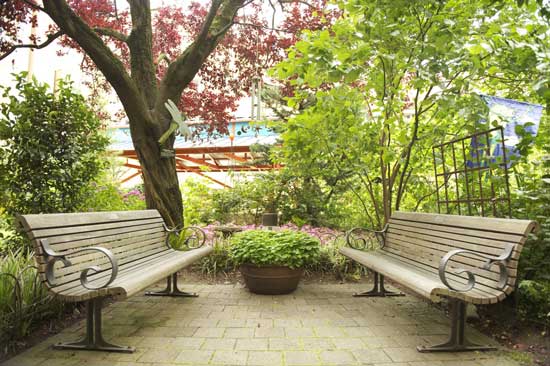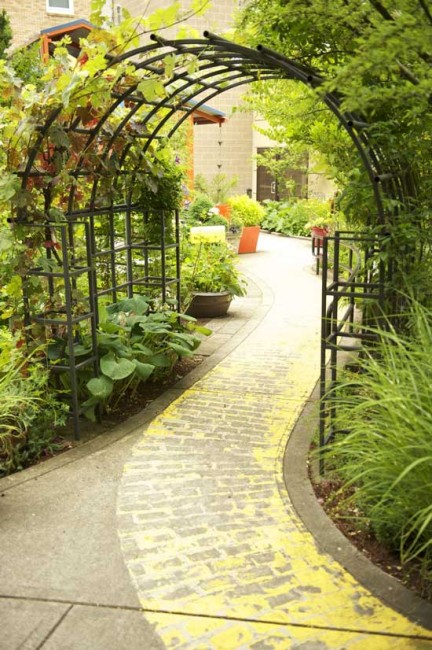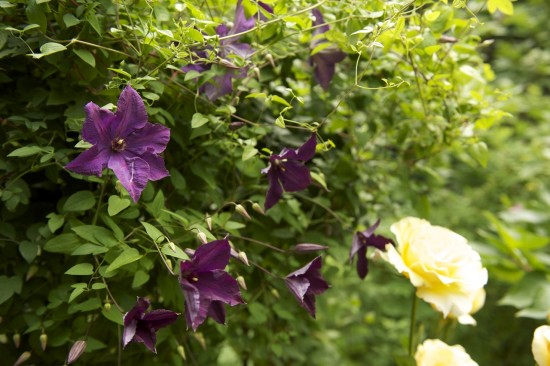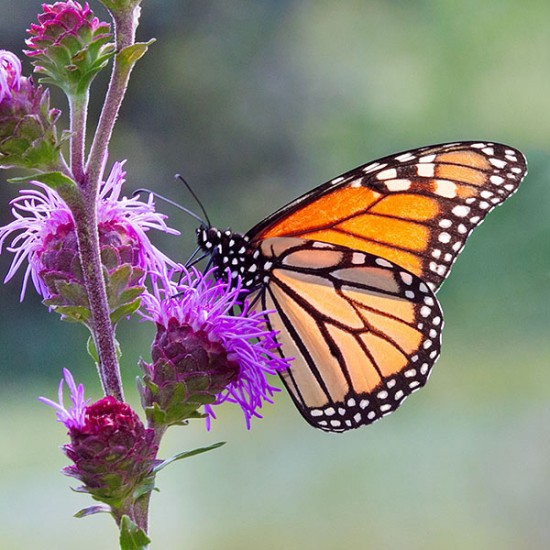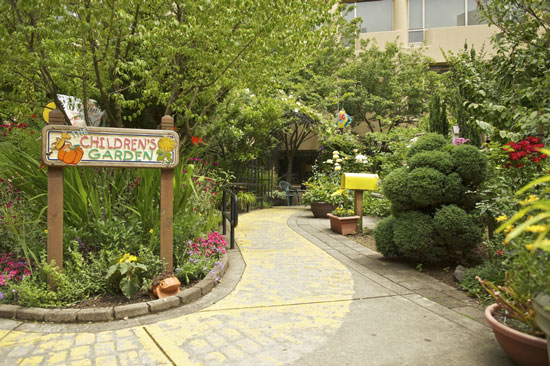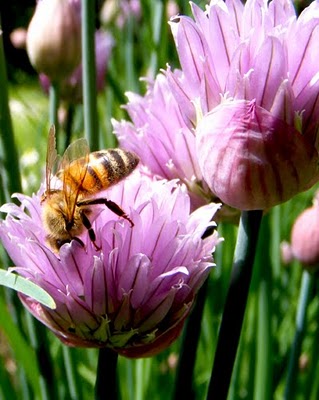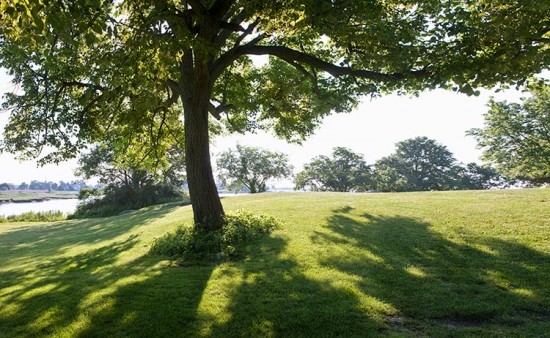
Banner Good Samaritan healing garden, photo by Brice Bradley
This past winter, Brice Bradley, a landscape architect and member of the Therapeutic Landscapes Network, posted a query on the TLN group page at Land8Lounge (the social networking site for Landscape Architects) asking for recommendations of healing gardens to visit in the Phoenix, AZ area. He got some good suggestions, and I also encouraged him to take notes and report back with his impressions. What we got was so much more! Brice took photographs and wrote a wonderful descriptive piece about his visits to three different gardens: Banner Estrella Medical Center in Phoenix; the Elsie McCarthy Sensory Garden in Glendale; and Banner Good Samaritan Medical Center, also in Phoenix. This is a long post – one of the longest I’ve published! – but since it’s so good (and since I can’t figure out how to use the “more” tool with this blog platform), it’s here in full. To view the entire slideshow with the essay, visit Brice’s post on Land8Lounge. It should go without saying (but I’ll say it anyway) that these are Brice’s observations and opinions. I would love to feature more first-hand accounts of therapeutic gardens on the TLN Blog. If you have the ability to visit and report on one, or two, or more, we will all benefit. That’s what makes the Therapeutic Landscape Network so strong! A network of passionate, engaged people participating to connect with and educate each other about this exciting field. So, Brice, over to you:
Therapy in the Desert, by Brice Bradley
It was 8:00 in the morning in Tucson, and our Mazda 5 micro van was filled to capacity; my daughter (7) and son (5) were prepared for departure and were blowing their final kisses to Grandma. My wife and I weren’t necessarily looking forward to the drive back to chilly Colorado; why would we when the pleasantly mild Arizona temps were treating us like royalty? All that stood between us and our midway overnight stop in Albuquerque was my buried-in urge to visit a few of the many therapeutic gardens sprinkled throughout Phoenix.
As we made our way into the city, a sense of eagerness began to surface as I had surpassed the point of reading about the benefits of curative spaces and was primed to wholly experience them. I had the added benefit of having my children in attendance as I firmly believe that much can be gained by observing how an innocent child embraces a given space. All too often, I find it easy to put on my “professional” glasses and overlook key–yet subtle–elements within a space that make it attractive to a more diverse set of users. I have found that observing how my children respond to a space almost always leaves me with a stronger sense of whether or not it is successful.
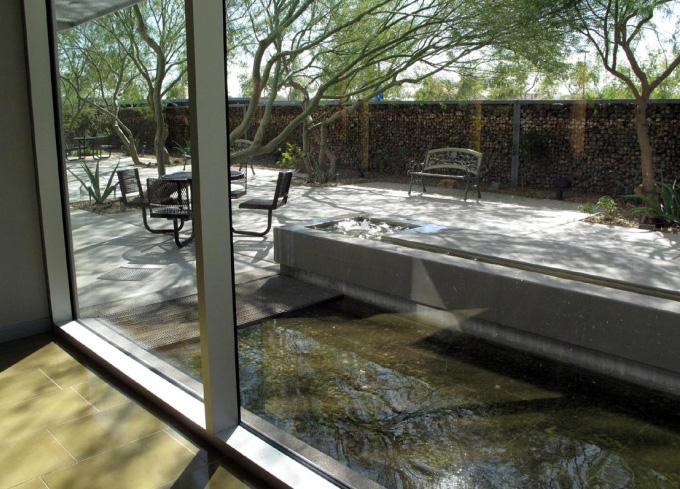
Photo of Banner Estrella garden by Brice Bradley
We rolled into our first stop, Banner Estrella [Medical Center], around 9:45 am. As we approached the curative space, the first thing I noticed was a water feature pulled in tight to the building. Running along the outside face of a glass curtain wall spanning the length of the garden along the north side, this feature was a well-placed and welcome transitionary element, tying the interior and exterior spaces together. I soon discovered that my 5-year-old son also spotted the water as his laissez-faire saunter quickly found purpose.
We made our way into the garden where a diminutive sensation quickly set in. Upon entering the space from the west end, you find yourself surrounded by foundation-level planting and architecture on all but a portion of the east side. Other than receiving some early-to-mid-morning sun, this area looks like it sits in shade for much of the day. Due to its location in a desert environment, this isn’t a bad thing, but my initial thought was, “Who would want to sit in a space where they could be viewed from almost any direction–much like a fish in a fish bowl?” Some form of overhead canopy and partial screening would be beneficial toward making this area a more comfortable place to spend time.
As I walked eastward, I noticed a nonconventional wood-and-steel door system on casters at the corner of what I soon discovered was a meditation chapel. As with all the spaces I planned on visiting that day, I tried to focus all of my observations around the question, “What makes this a healing space?” Recognizing that many people find comfort through their faith during times of recovery or grief, I was pleased to see that the chapel was made a key part of the garden and that access to the outdoor space could be enhanced by opening these larger, statelier doors.
The sounds of falling water and New Age music filled the space–something I found to be quite pleasant. A bubbling spring fed an elevated runnel from the east end. Integrated within a seat wall, the runnel allowed room for individuals to sit beside the flowing water, providing an opportunity for them to personally engage with its flow. Needless to say, my kids welcomed the chance to play in the water. Understanding that many people find peace in watching others, I thought about how the innocence of a kid at play within this space could be viewed as an instrument for healing, as there are few things quite so therapeutic as the sound of honest laughter coming from a child fully engaged at play. Weirs and infinity edges also helped diversify the way water created white noise within the space.
Music emanated from faux stones positioned in under-planted, stone mulch planting beds along the back side of a series of concrete peninsulas. Considering the modern level of refinement found elsewhere on the site, I was a bit taken back by the use of these stones to deliver the tranquil sounds. Integrating some form of speaker system into the surrounding gabion walls, which were clad in small laser-cut metal fauna, would have been nice as the music could have been softly projected beyond the space offering passers-by a taste of the serenity that could be found within.
Although the Estrella healing garden possesses elements found in other more notable healing spaces, I believe it lacked refinement. The bench peninsulas could have been smaller and oriented so that the seating was facing east and west. Smaller concrete pads would make more room for plant material and would have realigned the benches so that they wouldn’t be facing a wall of windows. More seating options, including movable chairs, would be beneficial as they would allow people to easily position themselves as desired. Plant material–specifically ground cover–would have softened the space by hiding the disproportionate amount of river rock mulch as well as enhance the level of privacy, encourage wildlife, and keep the space cooler.
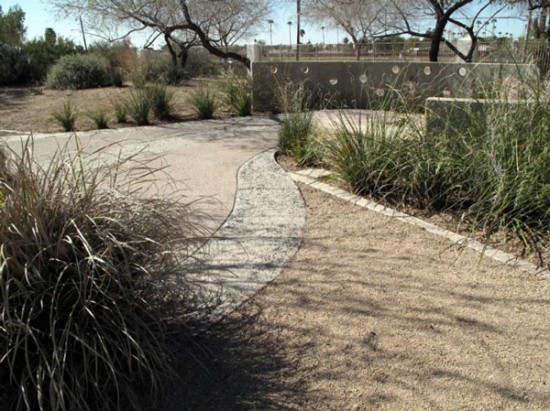
Photo of Elsie McCarthy Sensory Garden by Brice Bradley
Now we were off to Glendale to visit the Elsie McCarthy Sensory Garden. Overall, it was a nice yet simple space that appeared to be municipally managed as it seems to have degraded a bit since its opening. As you make your way toward the garden from the parking lot, you come upon a pedestal-mounted, bronze scale model of the site; I found it to be a welcome addition as it is an admirable way to expand the maps accessibility to people with disabilities–particularly those with visual impairments.
Shortly after entering the garden, you arrive at what I found to be one of the most fascinating things I saw that day – a tile-clad sculpture entitled Seeing Beyond by artists Joan Baron and Robert Miley. As you approach the piece, you are drawn in by the sound of dripping water from within. As I stood there, I found myself–much like a child–wanting to interact with the water; fortunately, the artists provided opportunists like me with opportunities to physically engage with the art by way of creatively crafted openings on each of the sculpture’s four sides.
As I mentioned earlier, the overall layout of the site was relatively simple; although it wasn’t something I found overly inspiring, I can appreciate the simple, circulatory approach to the design. I found getting back where I started to be very straightforward and in no time I was unable to see the main entry. Encompassing the space was a crushed-gravel ellipse walk. While I made my way around the site, I welcomed the crackling resonance of displaced gravel beneath my feet–something I find inherently relaxing. It would have been nice to have a few benches along the perimeter for those inclined to people watch or simply rest.
At the four nodes of the ellipse were distinctive elements–each tied to water–whether it be a water-based feature or flowing, paving patterns. On the outside of the ellipse was a continuous planting bed comprised of natural massings of regional trees and shrubs. Within the ellipse lay two tree-lined walks dissecting the space into four equal lawn panels. Where the two walks intersected at the heart of the garden stood a small plaza with a bronze dome water feature–about a foot tall–representing the center of a flower. On the perimeter of the plaza stood four stone blocks, each etched with unique finger labyrinths.
I left the garden feeling somewhat indifferent about the space; albeit winter, I felt that it–much like Banner Estrella–lacked a significant amount of supporting plant material near the pathways to engage the senses. In the spring and summer this space might light up with a push of greenery that stimulates the senses, but shouldn’t a sensory garden successfully work to enhance the senses year round? Additionally, I tend to look at lawn in the desert as a bit of an oxymoron, especially a warm season grass that is dormant during cooler times of the year when people are more inclined to enjoy the outdoors. Using a different turf type or possibly over seeding during the winter would brighten this space up, creating an inviting area in which to have a picnic or just to walk shoeless in the cool grass.
Having spent a number of summers in Tucson as a kid, I know exactly how warm a garden in this part of the country can get. It wouldn’t surprise me to know that this space remains relatively vacant in the summer from mid-morning until sunset. The fact that the bronze map was shaded–presumably to prevent it from getting too hot to the touch–indicates that during the heat of day this space is unbearable. As the trees mature, you will see an increase in the amount of available shade, but it’s still pretty hot in the shade when temperatures are pushing 100 degrees or more.
It is understood that desert environments possess a unique set of design constraints that prevent some best-practice approaches found in other successful man-made healing spaces from being fully realized. All in all, I believe the size of space, ease of access, and visibility within the space were good but I felt that it lacked a regional distinctiveness and believe that this space, if placed in a cooler part of the county, would have proven to be more successful.
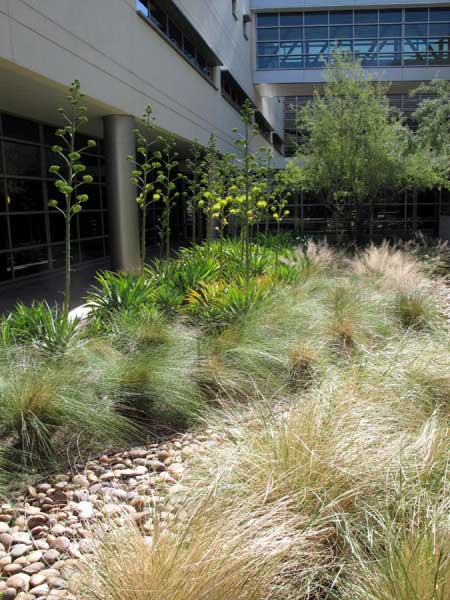
Banner Good Samaritan healing garden, photo by Brice Bradley
Our final destination was the healing garden at Banner Good Samaritan Health Center. Accessing the space required us to enter the facility as the garden was internal to the campus. As you make your way to the main entry, you walk past the recently renovated Sunken Garden. I found this space to be more inspiring than the healing garden as the contrasting plant palate was simple yet bold. Yucca in full bloom against the ornamental grasses was a welcome site, although I could see that the shadow patterns from the surrounding buildings prevented a portion of the yucca from reaching full bloom; I could only imagine how it would have looked if all of it was in bloom simultaneously.
Water was the central focus of the space–much like an oasis. I enjoyed the primary-colored mosaic tiling on the main water feature; the sound of the water hitting the river rock below was simple yet soothing. A portion of the garden was enclosed–accessible by doors within the building. At the center of this section of the garden gurgled a short column of water from within an area covered in river rock–much like a spring. Surrounding the spring were trees and the yucca–grass mix. A guardrail separated the landscape from the patio, which was lined with a few benches and movable tables and chairs; it was clear that the landscape was meant for viewing only, which was unfortunate as it would have been nice to see some form of circulation route implemented that would allow users the opportunity to more actively engage with the space.
The fully enclosed healing garden was nice with mature plant material; water features; and plenty of movable tables, chairs, and curving seat walls, thus providing a multitude of seating options. I had a conversation with an employee regarding our purpose for being there, and she commented that the water elements were more extensive at one time but had now been reduced to three isolated features. Much like the water element I commented on in the Sunken Garden, these were designed to be looked at as they were located up and out of the way where little hands could not get at them. I believe providing an opportunity to touch the water would have been a nice way to enhance a user’s ability to engage with the space.
As I walked through the garden I noticed a number of pigeons, and pockets of bird droppings were prevalent throughout the space, which left me with an impression that this space wasn’t maintained as well as it could be. The employee I visited with acknowledged that this was an ongoing issue but that it has improved. Additionally, I found a couple areas where plant material with sharp needles was easily accessible to kids. Although I support providing children opportunities to explore differences in plant material through touch, in this environment I believe that buffering the sharper plants with softer ones would have been a safer option.
So, what made each of these gardens healing spaces? Having had a little over a month to think about this I have come to the conclusion that it’s not up to me to decide but the end users–those seeking a moment of release from an unexpected diagnosis or the loss of a loved one or simply those desiring to get outside and enjoy the day. As a design professional, it’s easy to be critical of other people’s work–finding things I wouldn’t have done based on my education and past experiences. I suppose that is the downside of being in this industry as we rarely can enter a space and not pick it apart. As I progressed through the writing of this article, I began to think about my purpose for visiting these spaces, and what I discovered was that if I want to have a continued impact on the lives of those seeking peace through nature, I need to be constantly seeking ways to sharpen my proficiency. I presume many of you reading this feel the same way. If iron sharpens iron, a cooperative approach to progressing the effectiveness of therapeutic spaces needs to be fostered. What I discovered in Arizona is that designing healing gardens in a desert environment is a niche within a niche, and I look forward to seeing how they will evolve as we continue to educate ourselves on nature’s healing qualities.
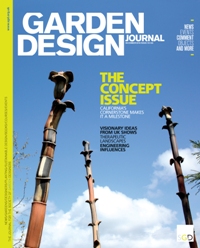 An article by Therapeutic Landscapes Network Founder & Director Naomi Sachs appears in the December 2010 issue of Garden Design Journal, the journal for the Society of Garden Designers in the UK. Click on the title to link to a pdf: Garden Design Journal article by Naomi Sachs, “That Healing Feeling.”
An article by Therapeutic Landscapes Network Founder & Director Naomi Sachs appears in the December 2010 issue of Garden Design Journal, the journal for the Society of Garden Designers in the UK. Click on the title to link to a pdf: Garden Design Journal article by Naomi Sachs, “That Healing Feeling.”